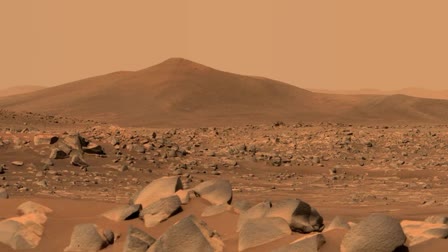Mars, like the Moon, is a rich destination for scientific discovery and a driver of technologies that will enable humans to travel and explore far from Earth. NASA has set an ambitious goal to send humans on a scientific mission to Mars, as early as 2035. The mission will cover a round trip of approx 402 million kilometres for six to seven months. Astronauts may spend up to 500 days on the Martian surface, collecting valuable scientific data before returning to Earth.
The Artemis Program aims to prepare astronauts for the Mars mission as they would be required to work in space for long periods. For this purpose, NASA will send the astronauts to the Moon and prepare them for Mars to uncover the mysteries of the red planet, including the possibility of life.
NASA will partner with commercial and international entities to establish a sustained human presence on the Moon. Then, taking the learnings from exploring the natural satellite, it will send the first astronauts to Mars.
Following two Artemis test missions, Artemis III, currently planned for 2026, will mark humanity’s first return to the lunar surface in more than 50 years. Artemis I was the first in a series of increasingly complex missions that was completed in November 2022. Artemis III will build on the crewed Artemis II flight test, adding new capabilities with the human landing system set for 2026, where astronauts will land at the Moon's south pole to gain experience essential for survival on Mars.
After the Artemis III mission, which will be the first to land people near the Moon's South Pole, astronauts on Artemis IV will live and work in humanity's first lunar space station, Gateway. This will provide new opportunities for scientific research and preparation for human missions to Mars. The mission will involve multiple launches and spacecraft dockings in lunar orbit and will include the debut of NASA's larger and more powerful version of its SLS (Space Launch System) rocket, as well as a new mobile launcher.
Mars missions require significantly more energy (propellant mass), much longer system service life, and more stringent departure window constraints than the lunar missions that NASA is developing under the Artemis program.
Why Mars Exploration
For more than 60 years, NASA has been dedicated to exploring and understanding the potential habitability of Mars. One of the key questions driving Mars missions is whether Mars was ever a habitable world. Additionally, these missions are also focused on identifying potential energy sources on Mars beyond sunlight. This is particularly important because the presence of "superoxides" on the Martian surface makes it unlikely for organic (carbon-based) molecules, which are essential for life, to survive.
It's worth noting that life on Earth thrives in environments without sunlight, such as dark ocean depths, inside rocks, and deep below the surface. These life forms often rely on alternative energy sources, such as chemical and geothermal energy. Given this understanding, scientists are exploring the possibility that tiny, subsurface microbes on Mars could potentially utilise similar energy sources to sustain life.
